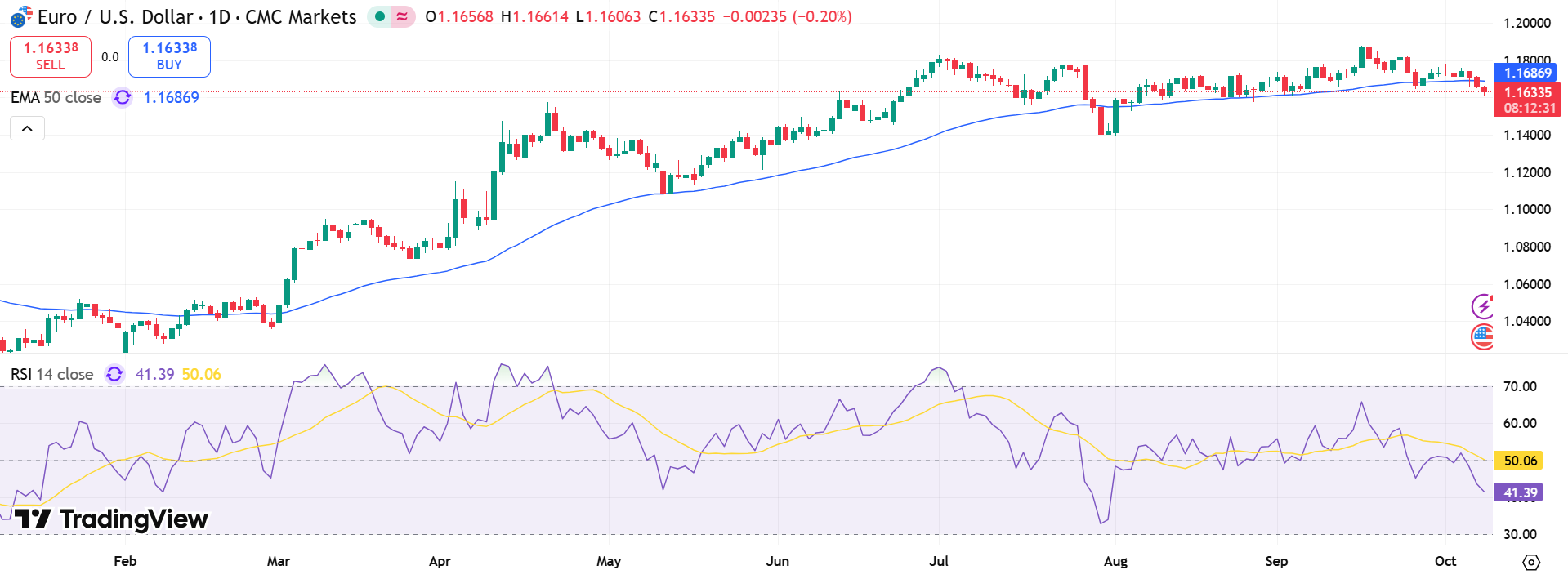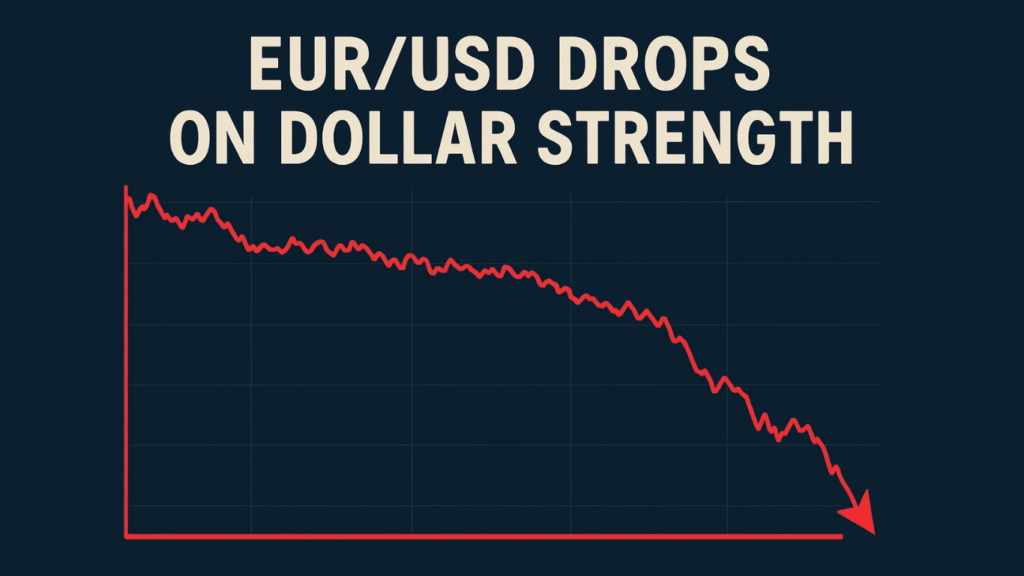The EUR/USD pair extended its losses on Tuesday, hovering near 1.1650, as persistent U.S. Dollar demand and renewed French political uncertainty dampened investor confidence. The euro remains trapped at the lower end of its recent trading range, pressured by safe-haven flows into the greenback despite stalled negotiations in Washington over the ongoing U.S. government shutdown.
Market sentiment remains cautious after French Prime Minister Sébastien Lecornu resigned just days after forming his cabinet—marking the fifth prime ministerial exit in two years amid the nation’s worsening debt crisis. The political instability has amplified concerns over fiscal sustainability in Europe’s second-largest economy, driving investors toward safer assets.
From a technical standpoint, the pair’s bias remains bearish:
- Support: 1.1650, 1.1620, 1.1590
- Resistance: 1.1710, 1.1745, 1.1780
Technical Outlook: Downside Risks Persist
Technically, EUR/USD trades near the bottom of its short-term range, with indicators firmly below their midlines, suggesting room for further declines. On the daily chart, momentum favors sellers as the 20-day Simple Moving Average (SMA) caps upside potential around 1.1740, while the 100-day SMA offers modest support near 1.1620.
On the four-hour chart, downside pressure remains dominant. The pair trades well below all major moving averages, with the 20-SMA sliding beneath the 200-SMA, confirming a short-term bearish alignment. Oscillators approach oversold territory, hinting at limited immediate downside but no signs yet of reversal momentum.
“Until the euro stabilizes above 1.1700, downside risks remain intact,” noted a senior forex strategist at a London-based investment bank.
Broader Market Drivers and Fed Focus
Beyond the technical picture, the macro backdrop continues to favor the U.S. Dollar. Political gridlock in Congress has extended the U.S. government shutdown, with President Donald Trump warning of potential mass layoffs if funding is not restored soon. This has intensified safe-haven flows into both the dollar and gold, the latter recently breaking to new record highs.

Meanwhile, Germany’s August Factory Orders fell 0.8% month-over-month, missing expectations for a rebound after a revised 2.7% decline in July, underscoring weakness in the eurozone’s manufacturing sector.
With no major U.S. data releases due, traders now turn their attention to upcoming Federal Reserve speeches and the FOMC minutes, due Wednesday. Policymakers remain divided over the pace of future rate cuts, leaving the euro vulnerable to further downside if the Fed signals a slower easing path.
For now, with Europe’s political strain deepening and U.S. fiscal negotiations stalling, EUR/USD’s trajectory remains tilted to the downside, with 1.1620 emerging as the next critical support to watch.


